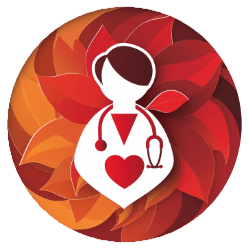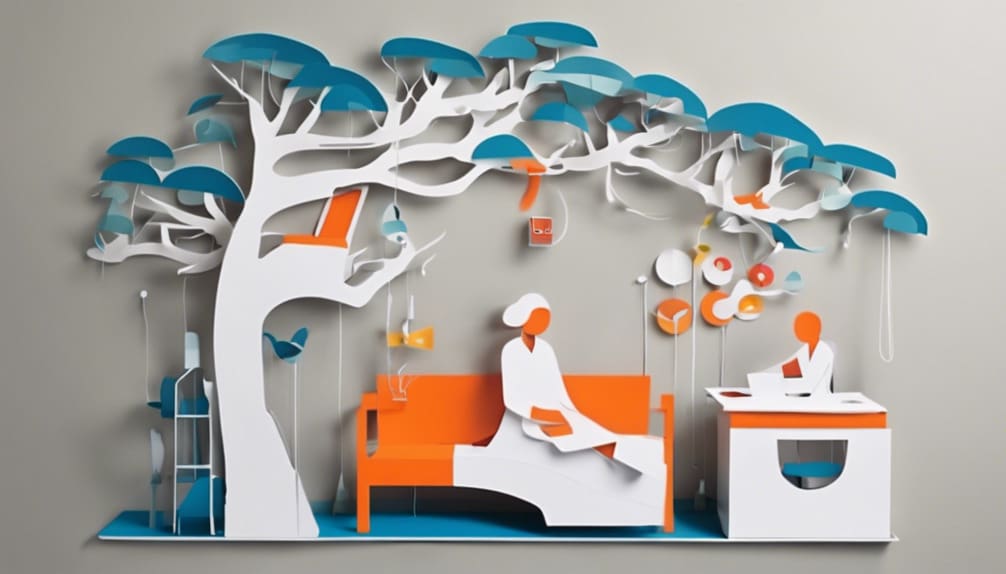As the saying goes, 'Too much of a good thing can be wonderful,' but when it comes to integrating technology in nursing, finding the right balance is key to ensuring you're providing the best care possible. You're in a profession that demands both your compassionate touch and your ability to navigate the latest digital tools.
It's clear technology can enhance patient care, yet it's crucial not to lose sight of the personal connections that lie at the heart of nursing. The challenge you face is in harnessing these technological advancements while maintaining the human element that defines your role.
With these 7 tech balance tips, you'll discover strategies to optimize your use of technology without sacrificing the invaluable personal interactions with your patients.
By striking the right balance, you'll not only enhance your professional practice but also foster a deeper connection with those in your care, ensuring you remain at the forefront of patient-centered nursing.
Let's explore how you can achieve this harmony, enhancing both your well-being and that of your patients.
Key Takeaways
- Set clear boundaries for technology use to maintain work-life balance.
- Prioritize human connections and genuine patient interactions in nursing practice.
- Practice mindful tech use to alleviate burnout and promote mindfulness.
- Seek balance-focused training to integrate technology and compassionate care in nursing.
Embrace Digital Boundaries
In today's digital age, it's essential to set clear boundaries for technology use to maintain a healthy work-life balance in nursing. As a nurse, you're at the heart of healthcare, tirelessly serving others. Yet, to continue providing exceptional care, you must prioritize self-care, ensuring your mental health isn't sidelined.
Achieving a healthy work-life balance is crucial, not just for your well-being but to prevent burnout that can sneak up in high-stress environments.
Utilize technology to boost your productivity and enhance patient care, but remember the importance of disconnecting. Designate tech-free times during your day, especially in your personal time, to unwind and recharge. This isn't just about turning off your devices; it's about fostering deeper, face-to-face connections with patients and colleagues, which are the essence of nursing.
Open communication with your team about the need for digital boundaries can also support a culture of understanding and flexibility. Together, you can create a workspace that values efficiency and the human touch in equal measure.
Regularly revisiting these boundaries ensures they remain effective, helping you and your colleagues continue to serve with compassion, unburdened by digital overload.
Schedule Unplugged Periods
While embracing digital boundaries is a step in the right direction, you'll also find that scheduling unplugged periods throughout your day can profoundly impact your well-being and work-life balance.
As a nurse, the long hours and emotional demands of your profession make you particularly susceptible to feeling overwhelmed and experiencing emotional exhaustion.
By designating specific times to disconnect from all electronic devices, you're not only prioritizing your mental health but also fostering a healthy work-life balance that's essential for your personal and professional fulfillment.
Consider these strategies to effectively integrate unplugged periods into your busy schedule:
- Designate 'tech-free' zones or times at home where you focus solely on relaxation or quality time with loved ones.
- Use your breaks at work to step away from digital screens, opting instead for activities like meditation or a brief walk outside.
- Set a strict 'no technology' rule for at least an hour before bed to improve your sleep quality and mental clarity.
Optimize Tech Tools
Understanding how to optimize tech tools can significantly enhance your efficiency and patient care as a nurse. When you evaluate technology based on your organization's needs and ensure it complements your workflow, you're setting the stage for safer, more efficient care. It's crucial to view technology as an ally in your mission to provide the best care. By having access to tools that streamline administrative tasks, you give yourself more time to focus on what matters most: your patients.
| Emotion | Technology Use | Impact on Care |
|---|---|---|
| Relief | Simplified documentation | More time for patient interaction |
| Confidence | Streamlined workflows | Safer, high-quality patient care |
| Empowerment | Access to continuing education | Enhanced care techniques |
| Gratitude | Efficient communication tools | Stronger team collaboration |
Nurse leaders, remember to provide education, support, and resources that frame technology as a benefit, not a burden. Success isn't measured by the quantity of technology used but by the quality of care you're able to provide. Understanding the impact of patient care technology on clinical delivery can transform how you approach your role. Embrace these tools with an open heart and mind to not just perform your duties but to excel in offering high-quality patient care.
Prioritize Human Connections
Harnessing technology to improve patient care is crucial, but let's not forget the power of human connections in healing. As a nurse, balancing the integration of tech tools while providing emotional and supportive care is essential. To help you achieve this balance, consider these strategies:
- Actively engage in meaningful conversations with patients to build rapport and trust, ensuring they feel heard and valued.
- Allocate quality time for genuine human connection during patient interactions, beyond just clinical assessments.
- Foster a supportive and empathetic environment that allows patients to comfortably express their concerns and needs.
Prioritizing these aspects of patient care won't only enhance their well-being and recovery but also contribute to your satisfaction and emotional fulfillment in your role.
Remember, the emotional and psychological aspects of patient care are as critical as the physical ones. By taking the time to listen and understand, you provide emotional support that significantly impacts patient outcomes.
Additionally, creating a supportive work environment where you and your colleagues can seek support and share experiences is vital for nurses to achieve work-life balance.
Embrace the power of human connections; it's a cornerstone in the art of nursing.
Practice Mindful Tech Use
In today's digital age, it's crucial to set boundaries with your tech use to maintain a healthy balance between work and personal life. As a nurse, your nursing career demands much from you, both physically and emotionally. The American Nurses Association (ANA) emphasizes the importance of finding flexible scheduling options to manage the demands of the job.
Yet, it's equally essential to practice mindful tech use. Set specific times for using technology and prioritize mindfulness throughout your day. Create tech-free zones to promote mindfulness and reduce screen time. This approach helps you focus on the present, alleviating the risk of burnout and maintaining your capacity to serve others effectively.
Be aware of your tech habits. Take regular breaks to refocus your attention away from screens. Implement digital detox periods to disconnect and engage in self-care activities. Prioritize face-to-face interactions, limiting technology use during personal and social engagements. This strategy not only supports your physical and emotional wellbeing but also aids in maintaining a healthy work-life balance, essential for a fulfilling nursing career at 61 or any age.
Seek Balance-Focused Training
To truly thrive in your nursing career, you must seek training that balances technology with the indispensable human touch of caregiving. As a registered nurse, integrating tech into your workflow is essential, but it's equally important to maintain the personal connection that defines quality care.
Healthcare organizations are increasingly recognizing the need for such balance-focused training within the nursing profession, aiming to improve patient outcomes while supporting nurses' mental and emotional well-being.
Consider these essential aspects for balance-focused training:
- Seek input from nurses to tailor training that addresses real challenges in blending tech with hands-on care.
- Focus on education and support that enables nurses to seamlessly integrate technology into their daily tasks without losing the personal touch.
- Emphasize the human element in nursing care, ensuring technology acts as a tool to enhance, not replace, the essential human connection.
Cultivate Offline Wellness Activities
While seeking balance-focused training is crucial, it's also vital to cultivate offline wellness activities that support your mental and emotional health outside the digital realm. In the fast-paced environment of hospitals and healthcare, taking time for yourself isn't just a luxury—it's a necessity.
Engaging in yoga, meditation, or your favorite hobbies allows nurses to disconnect from the relentless pace of technology, fostering a sense of peace and well-being.
Prioritizing your health through relaxation and stress reduction activities is key to preventing burnout, a common challenge in the healthcare industry. By dedicating time to offline pursuits like reading, listening to music, or exploring new hobbies, you not only enhance your energy levels but also improve your job performance. This commitment to self-care ensures you can provide quality care to your patients consistently.
Moreover, building and nurturing relationships with friends and family offers valuable emotional support, reminding you of the world beyond work. Utilizing resources such as employee assistance and wellness programs offers valuable insights and tools for managing stress, crucial for anyone in the nursing staff striving to maintain a healthy balance.
Frequently Asked Questions
How Can Nurses Keep up With Technology?
To keep up with technology, you should embrace ongoing education, seek feedback opportunities, and find a balance between tech and hands-on care. Remember, it's about enhancing your ability to provide compassionate and effective patient care.
How Do You Balance Technology and Patient Care?
To balance technology and patient care, you'll prioritize your patients' needs while effectively using tech to enhance care. Seek feedback, continuously learn, and leverage technology to streamline tasks and improve communication for better outcomes.
How Do You Pivot From Nursing to Tech?
To pivot from nursing to tech, start by believing in your ability to learn and grow. Leverage your critical thinking and problem-solving skills. Seek certifications, network for guidance, and explore hybrid roles combining both fields.
How Technology Is Changing Nursing Practice for the Better?
Technology's reshaping your nursing practice for the better, cutting down on medication errors and making communication quicker. It's about mixing tech and touch to provide care that's not just efficient but deeply personal too.





